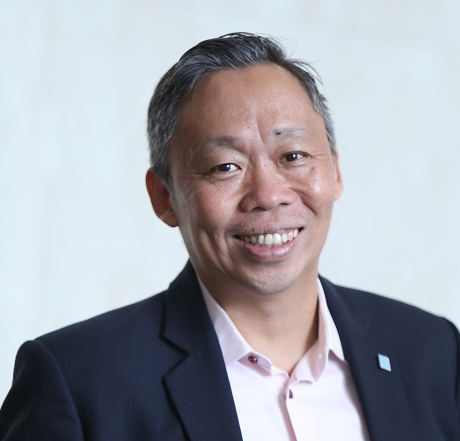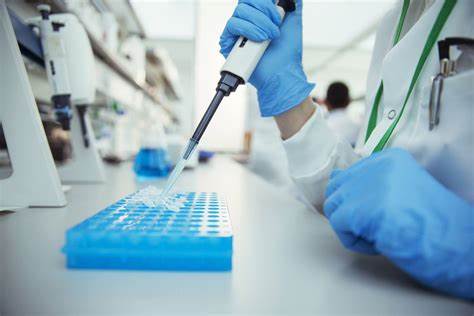
BioSpectrum Asia spoke to Benjamin Low, Vice-President, Asia Pacific, Milestone Systems, on how Singapore and APAC can maximise the use of such technologies to build a more resilient and efficient healthcare system for the future.
Edited Excerpts-
What role can video technology play in providing better healthcare? Have we seen some examples of implementation over COVID-19?
The healthcare sector has faced immense pressure to advance their operations in a short amount of time to contain the spread of Covid-19. Many do not know that video and its associated technologies can play a key role in solving current healthcare challenges.
The Video Management System (VMS) is a sophisticated software able to support potentially thousands of cameras from virtually anywhere on the enterprise network. Easy integration of new capabilities such as face and motion detection, sound detection, thermal imaging, and advanced analytics into traditional video solutions have prompted several interesting use cases in healthcare.
For example, the integration of thermal imaging cameras in the medical field has been exceptionally helpful as a frontline tool in the fight against Covid-19. The technology visualizes temperature differences from a safe distance, identifying those with a potential fever. By combining VMS with thermal and infrared capabilities, health officials can do away with extra manpower and traditional handheld thermometers, to quickly identify, test and if needed isolate unwell individuals to prevent further spread of the disease.
Video security systems coupled with the right video technologies can effectively help with social distancing in public areas; identifying busy areas via thermal mapping, limit long lines at the hospitals with queue management and video integrated with people counting software to help manage crowds in common areas such as waiting rooms.
With deep learning technology, the cameras can ascertain the number of people in its field of vision and the density of the crowd, even when faces are overlapping or facing different directions.
Operators are notified when an area exceeds its threshold and can address the issue immediately – this is especially useful for managing incoming and outgoing footfall.
Advancements in facial recognition software have also enabled healthcare facilities in India to shift to a ‘touchless’ vaccination process. The system is set to replace biometric fingerprint machines at Covid-19 vaccination sites to reduce manpower allocation and the risk of infection.
These innovations have improved hospitals and medical facilities, to provide better healthcare and maintain social distancing for operations to continue safely.
What are some of the current challenges faced by healthcare professionals, which can be tackled with video technology?
In Singapore, we’ve seen a dramatic rise in the number of cases due to the Delta variant. With healthcare facilities managing 100 to 200 cases per day, hospital capacity will soon reach a critical level. These professionals will be faced with the near-impossible task to deliver quality patient care while operating understaffed. These challenges place a strain on hospital security and medical staff who are looking to perform their duties effectively.
Anticipating the challenges medical practitioners would face during the pandemic, Milestone Systems built a solution to empower medical staff with real-time insights. For example, in Nemours Children’s Hospital in Orlando, Florida, the network video cameras deployed in every patient’s room provided an additional level of monitoring beyond nurses and clinical staff.
Prior to the coronavirus outbreak, medical staff at Nemours would conduct daily patient rounds in the hallways, taking up a large portion of their day that could be spent caring for their patients. The new and improved security system enabled doctors and nurses to conduct patient rounds remotely with lesser personnel needed. Staff would be alerted from their devices when an accident occurred, this enabled them to assist remotely and call other rapid response teams if needed.
Beyond monitoring, the open platform VMS now enables staff to better manage access to critical facilities, such as Intensive Care Units (ICU), where patients exposed to the virus are isolated.
With Covid-19 cases still on the rise, managing and monitoring access to these facilities is critical to keep everyone safe. The system can easily combine video security and access systems to deploy touchless access control where only those with granted access can enter these facilities, reducing the number of unnecessary interactions between patients, staff, or visitors in the hospital.
This combination allows security operators to manage their facility access based on historical statistics or real-time information and reduces the need for hospital staff to touch surfaces such as door handles, reducing potential exposure to the virus.
By leveraging the power of the open platform VMS, these facilities are better prepared to protect the health and well-being of their staff, patients, and the public.
What are some of the projects that Milestone have been working on to improve the quality of patient care?
Milestone Systems has partnered with Canon Inc and Senturian Solutions, an artificial intelligence company to trial a round-the-clock monitoring solution in Singapore, aimed at assisting caregivers and volunteers in looking after senior citizens who live alone.
Senturian’s behavioural analytics software, Senturian Neurolytics, has the capability to detect human falls and incidents of violence using a combination of AI-enhanced video and sound analytics. Leveraging the AI software, the round-the-clock monitoring system can automatically identify residents who might have slipped or fallen. It can also pick up cries and screams for help. The system then sends an alert to caregivers, who can respond and attend to incidents immediately.
The pilot technology works on two levels. On the first level, AI is leveraged through video footage from security cameras to identify individuals who might have had a fall. Such intelligent video analytics can distinguish between normal actions and an actual fall which already provides accurate incident alerts in most cases. On the second level, sound analytics is used as an additional layer to identify any screams or cries for help. This ensures that if the video function fails to identify any incidents, sound analytics can act as a fail-safe and alert caregivers promptly.
These analytics take a camera stream from Milestone’s XProtect VMS platform and then analyses it using algorithms and will send an “event” back to our software if a “fall event” is detected and alert the monitoring staff immediately. These capabilities provide for a robust lifesaving system with the ability to “see” and “hear”, eliminating unnecessary delay in caregiver response, while watching over elderly residents when caregivers cannot be present.
In addition to the safety aspect, we recognise that privacy will be a key concern for many and needs to be addressed.
The pilot solution includes privacy safeguards that are crucial in ensuring that the personal space and privacy of elderly residents are respected. The video analytics software has also been integrated with Canon’s Moving Object Mask plug-in for Milestone Systems’ XProtect® VMS software, replacing moving objects captured on live or recorded videos with silhouettes to offer privacy-sensitive monitoring and absolute personal data protection. The privacy masking is applied to the video and can be integrated with other analytics so that anyone watching will not be able to see faces or actual human figures but will see a blurred image instead.
When applied, the system extracts only metadata from video footage that is critical in identifying elderly persons in distress, censoring any non-essential physical and personal details. With this pilot technology, we hope to help the elderly retain their independence in a safe environment while ensuring that they can age in place with grace and dignity.
The software will allow nurses and physicians to monitor their home care patients from a screen, providing them a bird’s eye view of the patient’s health status and their environment.
In fact, the future of patient care could potentially be on a completely remote basis, with a network of cameras combined with privacy masking software, to safely check in on patients’ well-being.
Virtual care, powered by the VMS, offers a revolutionary way to disrupt operational models for patient care, leading to greater efficiency, customised health management and improved experiences.
How can the increased usage of data analytics with video management systems lead the industry to be future-ready?
The usage of Artificial Intelligence (AI), data analytics and the VMS has great potential to transform the healthcare industry. AI is one of the key innovations that has accelerated the transformation of the healthcare sector. The application of AI and data analytics in video technology will play a critical role to propel the sector towards state-of-the-art patient care and hospital management in APAC.
AI-enabled clinical decision support systems can improve diagnosis, treatment, and prognosis of a particular medical condition, by predicting the probability of a medical outcome or the risk of a certain disease. Often, biological imaging data are leveraged as an additional data source to enable doctors globally to analyse patients based on visual information and hence take proactive actions in real-time. With the integration of these AI-enabled capabilities to the VMS, these solutions can be used as an assistive tool to monitor, store, and broadcast such imaging data and hence further the effectiveness of such clinical decision support systems.
As seen above with Milestone’s pilot for eldercare, AI algorithms can be coupled with 3D smart-sensors to send live 3D-videos of a patient moving, falling, and/or leaving their beds. The data garnered from a VMS and AI integrated healthcare solutions, has been pivotal in coming up with treatments plans for geriatric care, hospitals (e.g., oncology departments) and rehabilitation facilities.
This seamless integration of different technologies to a unified open platform software, such as the VMS, enables different departments of healthcare facilities to efficiently connect, communicate, and share information.
To start building a more resilient, agile, and innovative infrastructure, the healthcare sector needs to shift to a more data-driven approach incorporating powerful video analytics.
It needs to embrace new data streams from new sources to offer a more complete picture of patient health, and a means to deliver better health outcomes through preventative and personalised care.
Dr Manbeena Chawla




